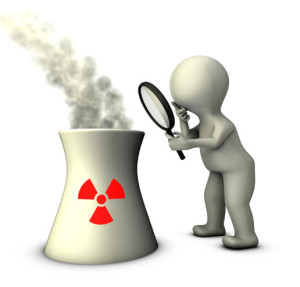Scientists explore the possibility of nuclear waste to energy
March 2, 2015A new type of reactor based on old research could be fueled by nuclear waste of current reactors.
In spite of the bad rap that nuclear power has received over the years, due to several accidents and concerns regarding the long-term disposal of radioactive fuel, some scientist believe that this form of power may eventually be once again seen in a positive light through waste to energy, via a reactor that is powered by the waste of current nuclear reactors, reported Green Car Reports.
The project involves using a “molten salt” reactor type.
Transatomic, a new startup, plans to market a reactor that is based on a molten salt reactor. According to a write-up of the project from Brookings Institution, this type of reactor design was developed roughly 50 years ago.
The molten salt reactor obtains its fuel from liquid uranium, which is far different compared to current nuclear power sources that rely on light water reactors (LWR), which utilize uranium-studded rods to heat water.
Although prototypes using this liquid uranium design were tried in the past without success, Transatomic believes that it can update the design of the molten salt reactor type so that it uses uranium fuel rods of other reactors, and in so doing, generate clean power while it consumes waste.
Nuclear waste to energy reactor could solve problems associated with current reactors.
 Currently, nuclear power makes up about 20% of the electricity produce in America, which is more than what the country receives from hydroelectric, wind, and solar generation. Even though nuclear power remains controversial, the fact remains that this form of power produces zero greenhouse gas emissions and it is not reliant on weather conditions to generate energy, as is the case with the majority of renewable sources.
Currently, nuclear power makes up about 20% of the electricity produce in America, which is more than what the country receives from hydroelectric, wind, and solar generation. Even though nuclear power remains controversial, the fact remains that this form of power produces zero greenhouse gas emissions and it is not reliant on weather conditions to generate energy, as is the case with the majority of renewable sources.
That being said, the trouble with nuclear power is that it has the potential to cause serious accidents, such as the Japan Fukushima disaster that occurred back in 2011. Moreover, if current reactors continue to rely on the LWR design, this will produce huge amounts of nuclear waste. Also, once uranium rods can no longer be suitably used in a reactor, these rods can stay radioactive for as long as 100,000 years, which is why unusable rods are usually buried after being sealed in casks.
According to Transatomic, its molten salt reactor could help solve these problems. According to Green Car Reports, The firm’s simulations approximate that “the reactor would produce just 2.5 percent as much waste as a comparable LWR–meaning a large enough network of them could consume the current stockpile of nuclear waste over time.”
Furthermore, because the reactor would not need coolant pumps that are externally powered, this would, in theory, make the reactor safe should there be a power failure, like the one linked to the disaster in Japan.
That being said, Transatomic is still a long way off from bringing its waste to energy project to the real world.

 With over 15 years of reporting hydrogen news, we are your premier source for the latest updates and insights in hydrogen and renewable energy.
With over 15 years of reporting hydrogen news, we are your premier source for the latest updates and insights in hydrogen and renewable energy.
The article states the molten salt reactor was tested 50 years ago without much success. Actually that thorium molten salt reactor was deemed a complete success by everyone – the man behind it, Dr Alvin Weinberg, Washington and the Pentagon. It was scrapped only because it would not contribute to making Cold War Atomic bombs. It was built and ran for five years at Oak Ridge Labs. When this technology is rebuilt it can run on “free fuel” stored as waste fuel at US reactor sites today.
Nice article, although I disagree with the statement that the molten salt design was tested in the past without success. The molten salt reactor experiment was successful. It burned uranium 233,235, and plutonium 239. It worked exactly as they calculated it ought to. The problem was with the decision makers at the AEC who wanted to put all their research money into fast breeders. This was a mistake and we lost a great technology because of it.